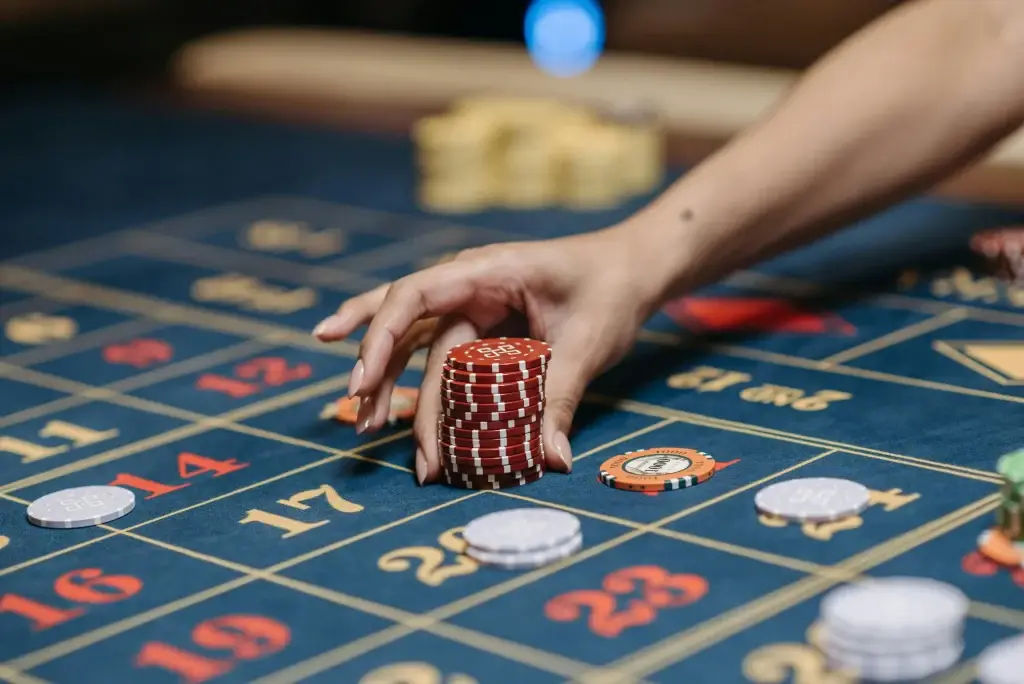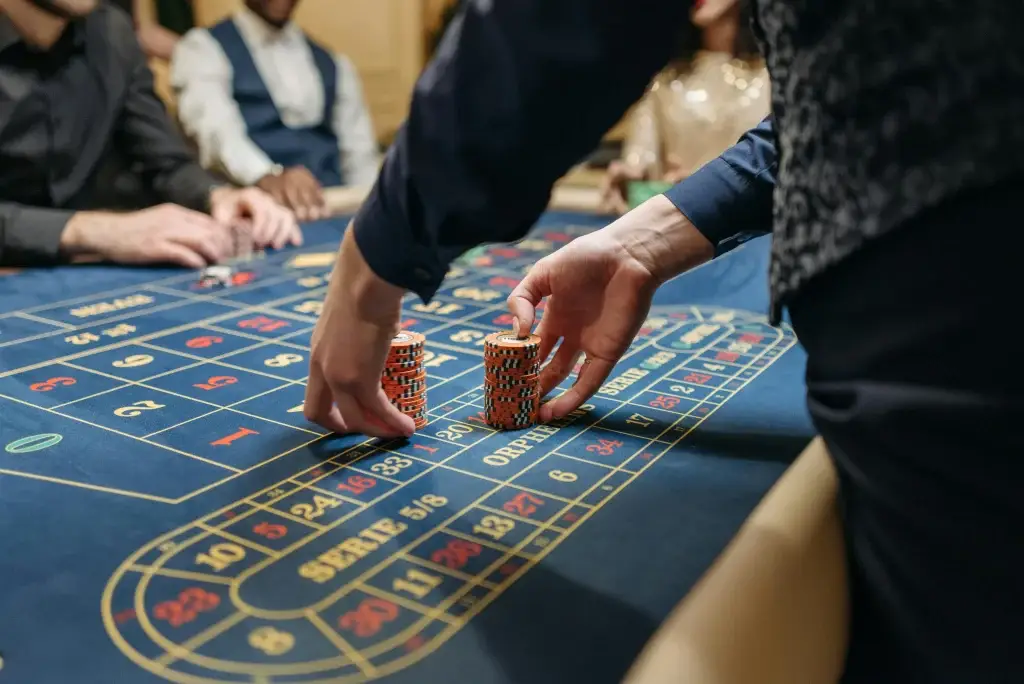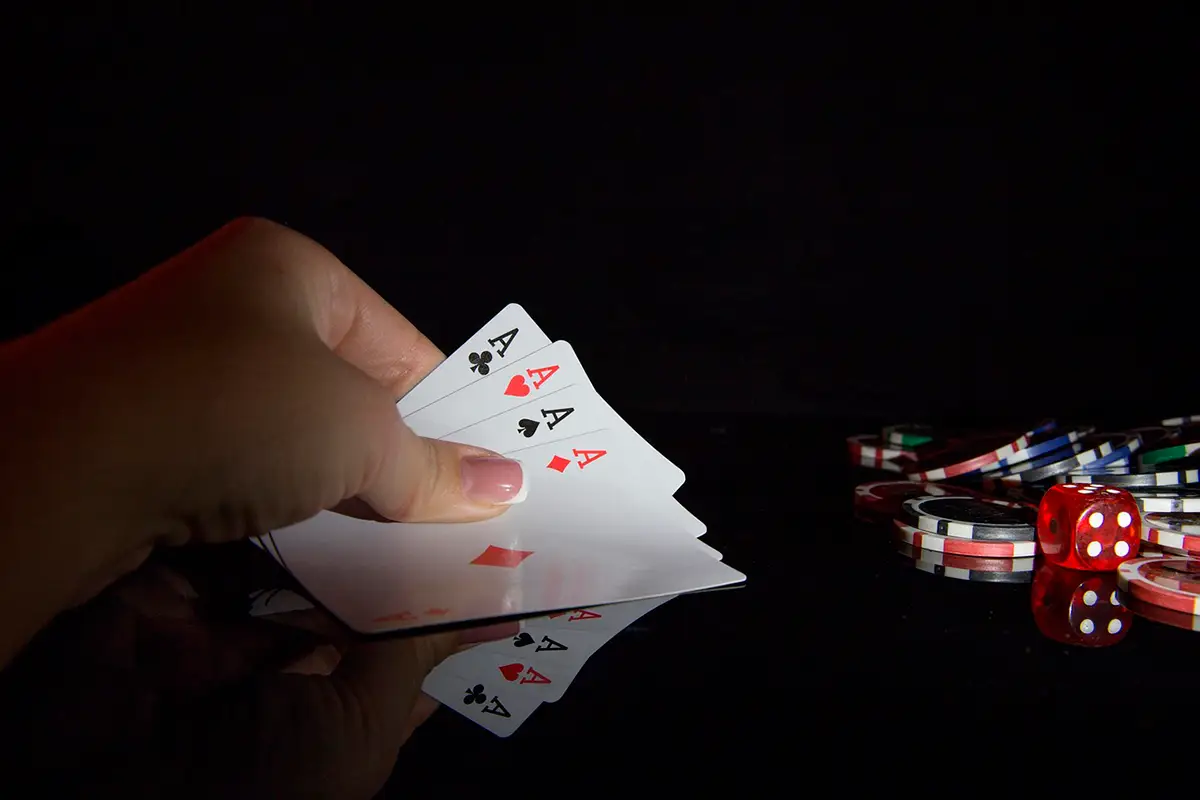Caribbean Poker is not just a type of poker, but a real gambling game with unique features. Since its inception, it has gained popularity and continues to attract people to casinos around the world. If you are looking for a game that combines classic poker mechanics with elements of excitement and strategic thinking, this option will be an excellent choice.
In this article, we will analyze in detail what Caribbean Poker in a casino is, its rules, strategies and how to increase your chances of winning. The material will give a clear idea of this entertainment. After reading to the end, you will be able to understand how to play Caribbean Poker and what is needed to hit the jackpot.

What is Caribbean Poker and how is it different from other games
Caribbean Poker originated in the 1980s. It quickly gained popularity in casinos due to its simple rules and exciting process. In the traditional version, participants compete with each other. In the Caribbean version, the dealer acts as an opponent. This is an important feature that makes the process more accessible and understandable for beginners.
The main difference from the classic version is that the Caribbean version uses only 5 cards. Participants are given the opportunity to bet on their combination, comparing it with the dealer’s cards. Another distinctive feature is that there are additional bets on the possibility of winning the ante or getting a special payout for a poker combination. For example, a flush or a straight. These features have made Caribbean poker an excellent choice for beginners. The rules are simpler, and the risk is significantly lower compared to other types of entertainment.
Unlike the same traditional versions, where users participate in general distributions, in Caribbean poker each person competes only with the dealer. This reduces the level of complexity for those who are just starting to master card games.
The game includes several key stages: bets, viewing cards and the final evaluation of combinations. After the cards are received, the participants make a choice: to continue playing or leave the round.
If you compare Caribbean poker with other card analogues in the casino, you can highlight the following advantages:
- Simplicity of rules. Players do not face each other, their main opponent is the dealer.
- Possibility to get payouts for certain combinations.
Another plus is clear and unambiguous bets.
How to play Caribbean poker: simple steps to victory
To start playing Caribbean poker, it is enough to understand a few basic rules and stages. Despite the fact that the process looks complicated, in fact, everything is quite simple. You just need to understand each step.
1. Start
Caribbean poker begins with the participant making the first bet – ante. This step will further determine the size of possible winnings. It is important to understand that, unlike the traditional version, there is no need to make bets during the process. It is determined in advance and after the cards are dealt.
2. Dealing the cards
After all the bets are made, the dealer deals the cards. Each of the people receives 5 pieces, hidden from the other people present. Unlike other types of poker, here the participant does not have to deal cards to his opponents. This is done by the dealer, and all the players are fighting against him, not against each other.
3. Evaluating the cards and choosing actions
After the cards are dealt, a person can choose two actions:
- Fold – refuse to play, losing the ante bet.
- Call – continue playing and additionally bet the amount of his current contract.
It is important to remember that the bet size at this stage must be equal to or greater than the ante amount.
4. Dealer’s hands
After all players have made their choice, the dealer reveals his cards. He has a mandatory rule: to win, he needs at least a pair of queens or better. If the dealer does not have a minimum combination, all remaining people win.
5. Evaluating the results
When the dealer reveals the cards, the game goes to comparison. If the combination of the present player is stronger than the dealer’s, he wins. In case of a tie, the ante bet is returned to the participant. Particular attention should be paid to how winnings for special combinations are calculated. For example, you can get extra payouts for a flush or a straight.
Basic Strategies for Successful Playing Caribbean Poker
 To win at Caribbean Poker, it is important not only to follow the rules, but also to use the right strategies. This will increase your chances of success. There are several approaches that will help minimize risks and maximize the benefits.
To win at Caribbean Poker, it is important not only to follow the rules, but also to use the right strategies. This will increase your chances of success. There are several approaches that will help minimize risks and maximize the benefits.
Strategies for Beginners
The first strategy: do not risk what you are afraid to lose. It is important to always stick to a certain amount for bets, and not to bet more than your bankroll allows. This way, you will minimize the risk of losing large amounts.
The second approach: watch the dealer’s cards. Understanding what he may have in his hand will help you better predict his actions. Thanks to this, you will be able to correctly assess your combination.
For experienced players
People with experience can use one of three strategies:
- Bluffing. This skill is a subtle art. Although the process is mainly aimed at acting against the dealer, the opportunity to use bluff is always present. This approach will help when a person has a weak combination, but a strong position on the table.
- Aggressive play in the early stages. When you have a good hand, don’t be afraid to make high bets. This can confuse the dealer and make him fold.
- Counting cards. It is important to always keep track of what exactly was folded, how much is left in the deck. Such information will help you make a more informed decision.
The choice of strategy is made based on the current situation. Therefore, you need to be able to analyze the process.
Caribbean Poker Online: How to Play and Win in Virtual Casinos
In recent years, Caribbean Poker has become extremely popular in online casinos. It is available on most major platforms. To take part, you do not need to go to a real gambling establishment. However, the online format has features that need to be taken into account.
Advantages of playing online
The first advantage is convenience and accessibility. You can play Caribbean Poker online at any time of the day, without leaving your home. Online casinos have a user-friendly interface that makes the process even more exciting.
The second advantage is bonuses and promotions. Virtual casinos often offer incentives to new users, which they can use for betting. This helps beginners get a better feel for the process and reduce risks.
How to choose an online casino to play
When choosing an online casino to play Caribbean poker, pay attention to several key factors. The first is whether the casino has a license. The legal status of the platform is a guarantee of honesty. The second criterion is the platform rating, user reviews and reputation. The third is the size of the bets that the site offers, as well as bonus offers and promotions.
Mistakes of beginners in Caribbean poker and how to avoid them
Despite its simplicity, Caribbean poker still has several pitfalls. Such nuances can lead to mistakes, especially among beginners. Let’s look at the most common of them and how to avoid them.
Common mistakes:
- Incorrect bet selection. Beginners often make mistakes by betting too much or too little at a certain stage. It is important not to forget that the odds must correspond to the strategic logic of the game.
- Inability to evaluate the dealer’s hands. Very often, participants do not take into account the possibilities of the dealer’s combinations. This leads to the wrong decision: taking too much risk or giving up a good hand.
- Ignoring bluffs. Even if your hand is not the strongest, it is important to sometimes use a feint to confuse the opponent. In this case, the dealer plays his role.
Mistakes are easy to avoid if you know how to act.
Is it worth playing Caribbean Poker? Let’s sum it up
 Caribbean poker is exciting and dynamic. It offers a chance for both beginners and experienced people to try their hand at exciting card duels with the dealer. Simple rules, the ability to use strategies and interesting dynamics make this entertainment a great choice for everyone who likes something new. If you want to get new emotions, Caribbean casino poker is the perfect choice.
Caribbean poker is exciting and dynamic. It offers a chance for both beginners and experienced people to try their hand at exciting card duels with the dealer. Simple rules, the ability to use strategies and interesting dynamics make this entertainment a great choice for everyone who likes something new. If you want to get new emotions, Caribbean casino poker is the perfect choice.

 en
en  de
de  ar
ar  es
es  hi
hi  fr
fr  nl
nl  it
it  pt
pt  el
el 









